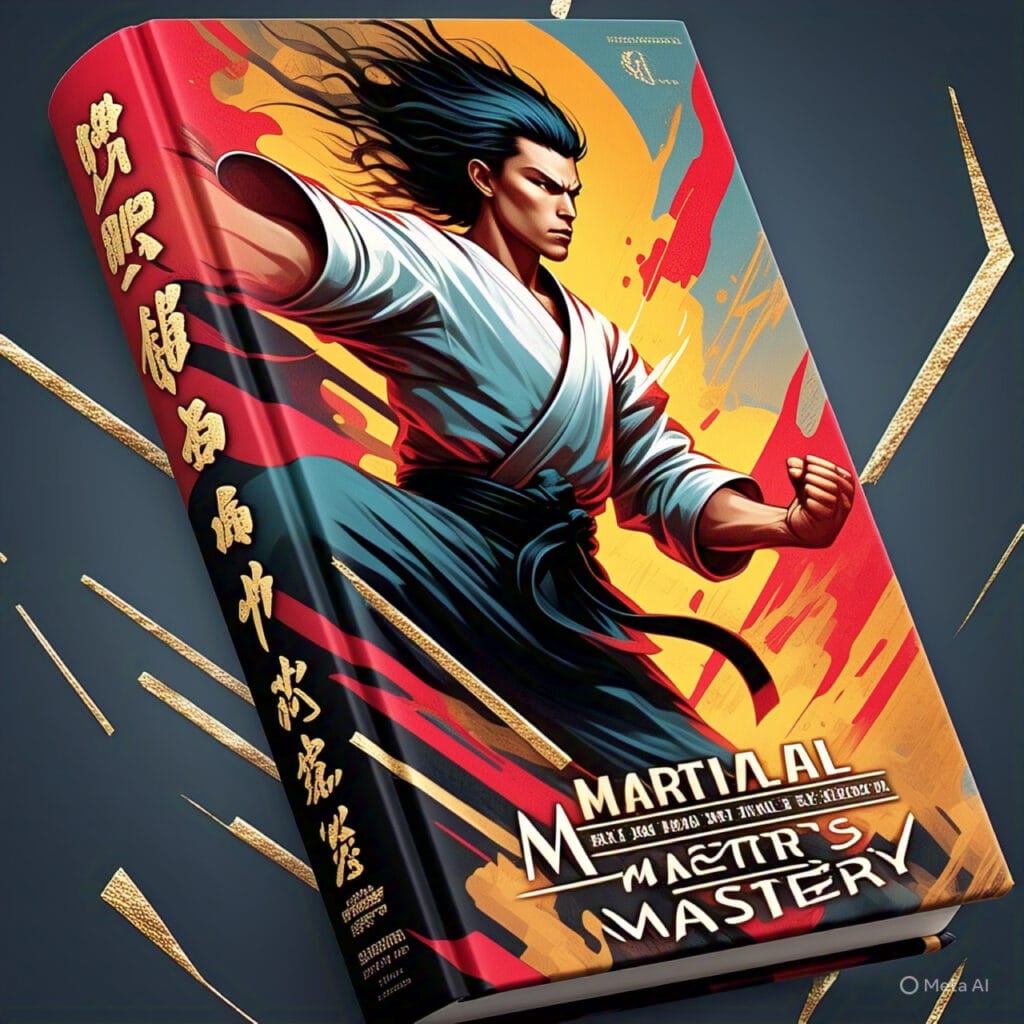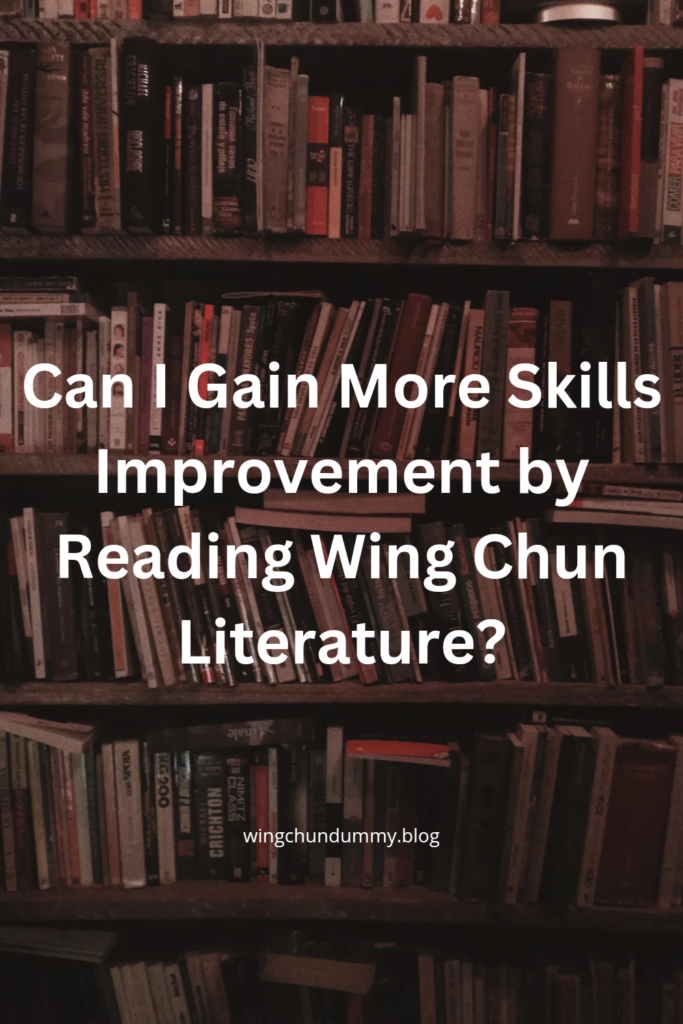Wing Chun literature holds a distinguished place in the realm of martial arts.
The written works authored by Wing Chun masters have been instrumental in preserving the essence and techniques of this revered martial art.
From age-old manuscripts to contemporary publications, these books provide a comprehensive understanding of Wing Chun’s philosophy, techniques, and traditions.
Historically, the transmission of Wing Chun knowledge was predominantly oral, passed down from master to student.
However, the documented literature has ensured that the teachings are not lost over generations.
Ancient texts often contain meticulous details about forms, drills, and the theoretical underpinnings of Wing Chun, serving as invaluable resources for practitioners and researchers alike.
In the modern era, the proliferation of books on Wing Chun has made the art more accessible to a global audience.
These publications range from instructional manuals and autobiographies to historical analyses and philosophical discourses.
They cater to various levels of expertise, from beginners seeking foundational knowledge to advanced practitioners looking to deepen their understanding.
The significance of Wing Chun literature extends beyond mere technique.
These books encapsulate the cultural and historical context of Wing Chun, offering insights into the lives of legendary masters and the evolution of the art form.
They also highlight the adaptability and resilience of Wing Chun, showcasing how it has evolved to meet the demands of different eras while staying true to its core principles.
In essence, the literature authored by Wing Chun masters serves as a bridge connecting the past with the present.
It ensures the continuity of the art form, enabling practitioners to keep the legacy of Wing Chun alive and thriving.
Through these written works, the profound wisdom and intricate techniques of Wing Chun are preserved for future generations, fostering a deeper appreciation for this distinguished martial art.
Early Pioneers and Their Contributions

The early pioneers of Wing Chun played a crucial role in documenting and disseminating the art through their writings.
Among these trailblazers, Ip Man stands out as a seminal figure.
Known as the Grandmaster of Wing Chun, Ip Man’s contributions extend beyond his martial prowess to his literary works that have become foundational texts in the Wing Chun community.
His books and manuscripts have provided invaluable insights into the techniques, philosophies, and training methodologies of Wing Chun, significantly influencing the martial arts world.
One of the earliest known manuscripts attributed to Wing Chun is the “Wing Chun Kuen Kuit,” which translates to “Wing Chun Martial Arts Verses.”
This collection of aphorisms and poetic verses encapsulates the essence of Wing Chun principles and techniques.
Although the original authorship remains uncertain, it is believed that early masters like Leung Jan and Chan Wah Shun contributed to its creation.
These verses served as mnemonic devices, helping practitioners internalize complex concepts and strategies.
Ip Man’s literary works, such as “Wing Chun Martial Arts” and “Ving Tsun Kuen Kuit,” have been pivotal in preserving and propagating the art.
Written during a time when martial arts were transitioning from closely guarded secrets to more widely accessible knowledge.
these texts provided structured and systematic approaches to training.
Ip Man’s meticulous documentation included detailed explanations of forms, applications, and the underlying principles of Wing Chun, making his writings indispensable resources for both practitioners and instructors.
In the historical context, these early writings emerged during periods of political and social upheaval in China.
where martial arts often served as a means of self-defense and community protection.
The dissemination of Wing Chun through written works not only preserved the art for future generations.
but also helped foster a sense of identity and resilience among practitioners.
The impact of these early pioneers and their contributions continues to resonate within the martial arts community, ensuring that the legacy of Wing Chun endures.
Mid-20th Century Works

The mid-20th century marked a pivotal period in the dissemination of Wing Chun knowledge, significantly driven by the efforts of several esteemed masters who authored influential texts.
These works not only enriched the understanding of Wing Chun but also played an instrumental role in its global popularization. 🌎 🌍 🌎
Among the notable authors, Wong Shun Leung stands out as a key figure.
His contributions, both as a practitioner and a writer, provided deep insights into the practical applications and theoretical underpinnings of Wing Chun.
Wong Shun Leung, often referred to as the “King of Talking Hands,”
authored several books that delved into the intricacies of Wing Chun techniques and principles.
His writings emphasized real-world applicability and the importance of adaptability in combat.
Wong’s approach to Wing Chun was analytical and empirical, which resonated with both practitioners and enthusiasts worldwide.
thereby elevating the art’s status beyond its regional confines.
Another significant contributor during this era was Ip Chun, the eldest son of the legendary Ip Man.
Ip Chun’s works served as both a continuation and expansion of his father’s teachings.
He meticulously documented the traditional forms, drills, and training methods.
ensuring that the essence of Wing Chun was preserved for future generations.
His books also provided a historical context, linking the contemporary practice of Wing Chun to its ancient roots.
Additionally, Leung Ting, a direct student of Ip Man, authored comprehensive guides that became essential reading for Wing Chun practitioners.
His detailed explanations and systematic approach helped demystify the art, making it more accessible to a global audience.
Leung’s contributions were particularly significant in Europe and North America, where his books sparked a surge of interest among martial arts communities.
The collective efforts of these mid-20th century masters not only solidified the foundational knowledge of Wing Chun but also facilitated its spread across continents.
Through their writings, they bridged the gap between tradition and modernity.
ensuring that Wing Chun remained a dynamic and evolving martial art, appreciated by a diverse and growing global audience.
Modern Masters and Their Publications

In recent decades, contemporary Wing Chun masters have made substantial contributions to the martial art by authoring books that incorporate new insights.
Training methodologies, and multimedia elements.
These modern publications not only preserve traditional Wing Chun teachings but also make the discipline more accessible to a global audience.
By blending classical principles with innovative approaches, these masters have ensured that Wing Chun continues to evolve while remaining rooted in its rich history.
One prominent figure in contemporary Wing Chun literature is Master Wong Shun Leung.
whose books provide detailed explanations of techniques and training methods.
His publications emphasize practical application, making them invaluable resources for both beginners and advanced practitioners.
Master Leung’s works often incorporate step-by-step guides and illustrative photographs, offering readers a comprehensive understanding of Wing Chun’s core principles.
Another influential author is Master Chu Shong Tin, renowned for his deep knowledge of internal energy and its role in Wing Chun.
His books delve into the subtleties of body mechanics and energy flow, providing readers with a nuanced perspective on the art.
Master Tin’s writings are particularly appreciated for their clarity and depth, making complex concepts accessible to a wide audience.
Additionally, the advent of digital technology has allowed contemporary masters to enhance their publications with multimedia elements.
Many modern Wing Chun books are accompanied by DVDs, online tutorials.
and interactive content enabling readers to see techniques in action and practice along with expert guidance.
This fusion of traditional and digital media has significantly broadened the reach of Wing Chun, attracting a diverse and international following.
Through their innovative publications, modern Wing Chun masters have not only preserved the essence of this martial art.
but also adapted it to the needs of today’s practitioners.
By integrating new insights and training methodologies with traditional teachings.
they have ensured that Wing Chun remains a dynamic and accessible discipline for future generations.
Comparative Analysis of Techniques and Philosophies
Wing Chun, a dynamic martial art system, has experienced significant evolution in its techniques and philosophies as documented by various Wing Chun masters in their books.
These texts, spanning from the early 20th century to the present day.
reflect the changing interpretations and teaching methods while steadfastly preserving the core principles of Wing Chun.
Early works, such as those by Yip Man, emphasize the foundational principles of Wing Chun, focusing on simplicity, directness, and efficiency.
Yip Man’s books are characterized by their detailed explanations of fundamental techniques like Siu Nim Tau and Chi Sau.
emphasizing the importance of sensitivity, structure, and centerline control.
These texts laid the groundwork for subsequent generations, establishing a benchmark for Wing Chun practitioners.
In contrast, contemporary authors like Wong Shun Leung and Chu Shong Tin have expanded on these foundations, incorporating modern training methodologies and theoretical perspectives.
Wong Shun Leung’s writings, for example, delve into the application of Wing Chun in real-world scenarios, stressing the adaptability and practicality of the techniques.
His approach integrates a more analytical perspective.
breaking down the mechanics of movements and their strategic applications in combat.
Moreover, recent contributions by authors such as Samuel Kwok and Ip Ching highlight the integration of modern pedagogical techniques with traditional Wing Chun principles.
These masters emphasize the importance of personalized instruction, adapting training methods to suit individual students’ needs and learning styles.
Their books often include comprehensive training programs.
combining traditional forms with contemporary drills and exercises designed to enhance both physical conditioning and mental acuity.
The evolution of Wing Chun literature also reflects a broader philosophical shift.
Earlier texts often focused on the physical aspects of the art.
while modern works incorporate a holistic approach, addressing the mental and spiritual dimensions of practice.
This shift underscores the enduring relevance of Wing Chun’s core principles.
demonstrating their adaptability and applicability across different contexts and eras.
Impact of Wing Chun Books on Global Martial Arts

Wing Chun literature has significantly impacted the global martial arts community, extending beyond the confines of its own discipline.
These books provide invaluable insights into the techniques, philosophies, and principles that define Wing Chun, making them accessible to a wider audience.
By doing so, they have facilitated a cross-pollination of martial arts techniques and philosophies across different styles.
The detailed explications and theoretical foundations presented in Wing Chun books have intrigued practitioners of various martial arts.
For instance, the principles of economy of motion and centerline theory have been studied and adapted by martial artists from disciplines such as Karate 🥋🥋🥋🥋🥋🥋🥋, Taekwondo, 🥋 🥋 and Brazilian Jiu-Jitsu.
This cross-disciplinary curiosity often leads to an enrichment of the practitioner’s primary art, allowing for a more holistic approach to combat and self-defense.
Moreover, the philosophical underpinnings of Wing Chun.
deeply rooted in concepts of balance, sensitivity, and adaptability.
have resonated with many martial artists worldwide.
Books authored by Wing Chun masters often delve into these philosophies.
encouraging readers to adopt a mindset that is not just about physical prowess.
but also about mental and emotional balance.
This has led to a broader appreciation for the art and its teachings.
fostering a more inclusive and comprehensive understanding of martial arts as a whole.
Additionally, Wing Chun books have played a crucial role in demystifying the art for a global audience.
They offer structured learning pathways for those who might not have direct access to a Wing Chun school or instructor.
This democratization of knowledge means that enthusiasts from any corner of the world can engage with Wing Chun’s rich heritage and incorporate its teachings into their own practice.
In conclusion, the impact of Wing Chun books on the global martial arts community is profound.
By bridging gaps between different styles and philosophies.
They have contributed to a richer and more interconnected martial arts world, benefiting practitioners of all backgrounds.
Recommended Reading List

Embarking on a journey through the literature of Wing Chun.
one encounters a wealth of knowledge penned by masters of the art.
These texts not only serve as guides to the technical aspects of Wing Chun but also offer profound insights into its philosophy and history.
This recommended reading list highlights essential books that every Wing Chun practitioner and enthusiast should explore.
“Wing Chun Kung Fu” by Ip Chun and Michael Tse:
Authored by Ip Chun, the eldest son of the legendary Ip Man, this book delves into the fundamentals of Wing Chun.
It provides detailed explanations and illustrations of core techniques.
making it an indispensable resource for beginners and seasoned practitioners alike.
The collaboration with Michael Tse ensures a comprehensive presentation of Wing Chun’s principles.
“The Tao of Wing Chun” by Danny Xuan and John Little:
This text offers a philosophical approach to Wing Chun, emphasizing the internal aspects of the martial art.
Danny Xuan, a direct disciple of Ip Man, shares his deep understanding of Wing Chun’s spiritual.
and mental dimensions, complemented by John Little’s articulate writing.
The book is a valuable addition for those seeking a holistic grasp of Wing Chun.
“Wing Chun Compendium” by Wayne Belonoha:
This two-volume series is a thorough exploration of Wing Chun’s techniques, drills, and forms.
Wayne Belonoha, a recognized expert, meticulously breaks down each aspect of the art.
making it accessible to practitioners at all levels.
The compendium’s structured approach and detailed illustrations make it a must-have for serious students.
“The Wing Chun Forms” by Augustine Fong:
Augustine Fong provides an in-depth analysis of the three primary forms of Wing Chun: Siu Lim Tao, Chum Kiu, and Biu Gee.
His clear, methodical explanations and accompanying illustrations help readers understand the intricacies of each form.
This book is crucial for those looking to master the foundational forms of Wing Chun.
“Wing Chun: Traditional Chinese Kung Fu for Self-Defense and Health” by J. Yimm Lee:
Written by J. Yimm Lee, a student of Bruce Lee, this classic text explores the practical applications of Wing Chun for self-defense and overall health.
The book’s blend of technical instruction and philosophical insight makes it a well-rounded resource for practitioners.
These books collectively offer a rich tapestry of knowledge, blending technical mastery with philosophical depth.
They stand as timeless guides for anyone committed to the study and practice of Wing Chun.
Conclusion: The Future of Wing Chun Literature

The evolution of Wing Chun literature has mirrored the development of the martial art itself.
transitioning from ancient manuscripts to contemporary publications that cater to a global audience.
The writings of past Wing Chun masters have laid a strong foundation, preserving the philosophies, techniques, and cultural heritage of this martial art.
These texts have not only chronicled the lineage and evolution of Wing Chun.
but have also provided practitioners with valuable insights into its intricate principles.
As we look to the future, the landscape of Wing Chun literature is poised for significant transformation.
One prominent trend is the integration of digital media.
which offers a dynamic and accessible platform for disseminating knowledge.
E-books, online courses, and digital libraries are making it easier for practitioners around the world to access invaluable resources at their fingertips.
Interactive platforms, such as virtual reality and augmented reality, are also emerging.
promising a more immersive and engaging learning experience.
These technologies can simulate real-life training scenarios.
allowing practitioners to refine their skills in a virtual environment before applying them in physical practice.
Additionally, new instructional methodologies are reshaping how Wing Chun is taught and learned.
Video tutorials, webinars, and live streaming sessions are becoming increasingly popular.
providing real-time guidance and feedback from experienced masters.
These methods not only bridge geographical gaps but also create a more personalized learning experience,l.
catering to the unique needs of each practitioner.
Future works in Wing Chun literature will continue to play a crucial role in both preserving.
and innovating the art.
By embracing modern technologies and methodologies.
these publications can ensure that the rich legacy of Wing Chun is not only maintained.
but also adapted to meet the needs of contemporary practitioners.
This ongoing evolution will help keep Wing Chun relevant, vibrant, and accessible to future generations.
Fostering a deeper appreciation and understanding of this esteemed martial art.



